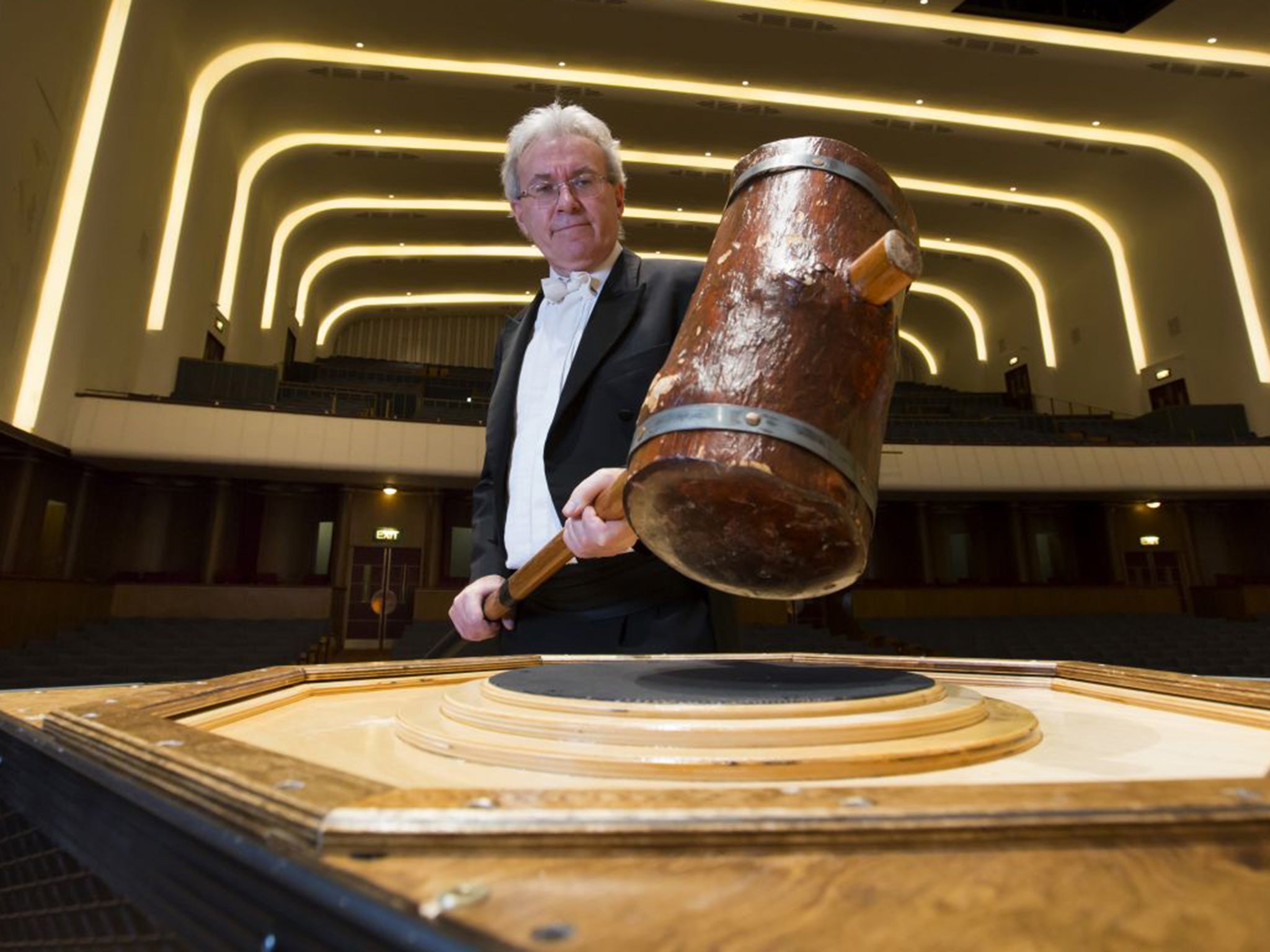Percussionist explains why a huge mallet takes centre stage in Gustav Mahler's Symphony No 6
Making a 'Hammerschlag' (hammer blow) noise is crucial to the final movement of the Austrian composer's work

Representing the sound of fate sounds rather esoteric, but it all comes down to having the right tools, a strong arm and a good sense of timing, says Graham Johns, principal percussionist with the Royal Liverpool Philharmonic Orchestra.
A whopping mallet comes in useful, as does a big wooden box. Simply raise the mallet above your head and bang it down on the box with as much oomph as you can muster. The result should be a “hell of a thud”, a heart-stopping sound that “reverberates around the hall”.
Making the noise known as the Hammerschlag (hammer blow) in the final movement of Gustav Mahler’s Symphony No 6 has been a serious business for percussionists since the work was first performed in 1906. The Austrian composer saw fate as a force capable of cutting people down. What was needed, said Mahler, was a noise that’s “brief and mighty, but dull in resonance and with a non-metallic character (like the fall of an axe)”.
Percussionists construct their own instrument for Symphony No 6 because, as Mr Johns explains, “you can’t go into a shop and buy a Hammerschlag”. Walloping an old wooden crate is a common approach, but Mr Johns admits he’s never been “100 per cent satisfied” with the sound.
Until now, that is. A friend who plays double bass in the Chicago Symphony Orchestra, who is also a gifted carpenter, has built Mr Johns what is arguably the biggest, baddest Hammerschlag ever. The striking surface is mounted on springs, and depresses about two inches inside the box when struck by the mallet, a mighty 5kg weapon made from a log found in a Liverpool park.
“When the diaphragm moves it displaces the air and makes a really loud, deep sound,” says Mr Johns. “It’s the effect Mahler wanted.” Mr Johns is now ready for tomorrow’s first rehearsal, but admits he’s nervous. Translating the crotchet in Mahler’s score into an apocalyptic sound requires strength, technique and a steady nerve. “You raise it [the mallet] above your head and once you’re swinging you’re committed,” he says. “I have to time the landing with millisecond precision and if you get it wrong you’re in trouble – you’ll put your back out.”
A visit to the physiotherapist may be the least of his problems, however, because some musicians – including Mahler – believe the Hammerschlag is cursed. When the symphony was first played it had three hammer blows, but Mahler reduced it to two: “He was concerned that if he put the third one in something nasty might happen to him.”
The revision didn’t save Mahler, who was destroyed by three awful events: his daughter died, aged four, he had to resign from the Vienna Opera, and he developed a heart condition, dying in 1911. Mr Johns says he won’t deliver three blows at next week’s performances – unless conductor Vasily Petrenko asks.
Join our commenting forum
Join thought-provoking conversations, follow other Independent readers and see their replies
Comments